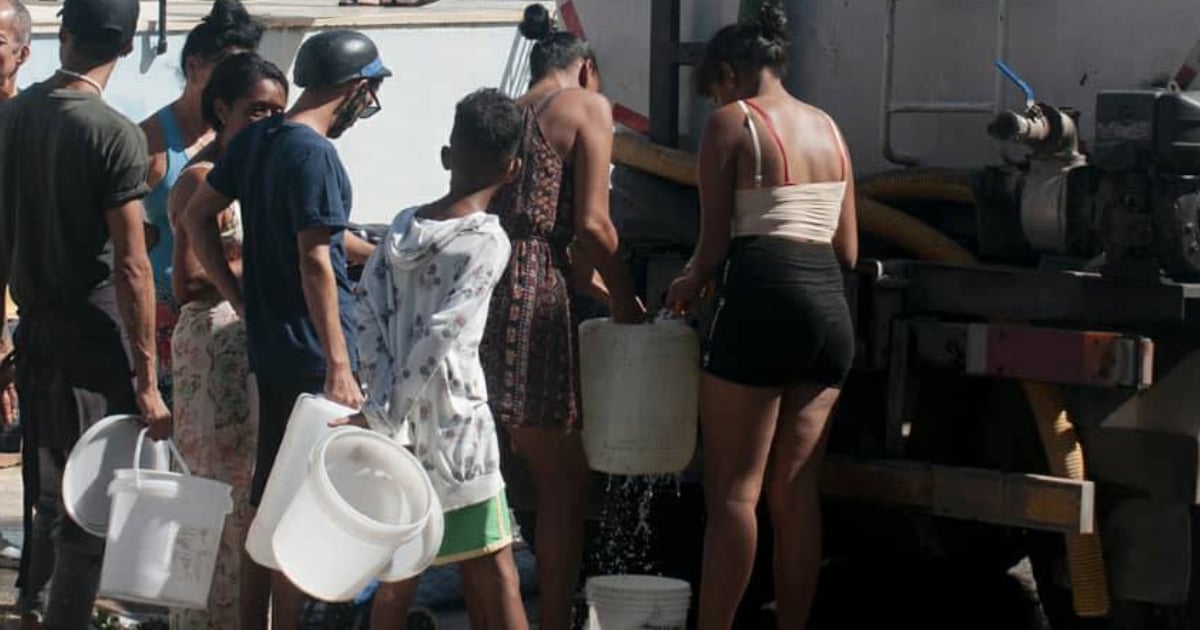A spill of cachaza at the Boris Luis Santa Coloma sugar mill in Mayabeque province has polluted the water source for Matanzas, leading to interruptions in the supply and raising concerns among residents about the potential impact on drinking water quality. Antonio Hernández Martínez, the Hydraulic Resources delegate of Matanzas, announced on social media that, as a precautionary measure, water pumping hours have been reduced, affecting the water supply to the Matanzas Este and Oeste, Versalles, and El Naranjal communities.
Despite the absence of local media coverage on this contamination risk, it was decided to prioritize water supply to hospitals and healthcare facilities. Additionally, water is being distributed through tanker trucks in the affected neighborhoods, according to Hernández. The National Institute of Hydraulic Resources (INRH), the Ministry of Science, Technology and Environment (CITMA), and the Hygiene Directorate are conducting constant monitoring to assess contamination levels and ensure the safety of the water being distributed.
Hernández stated that the public will be kept informed about the progress in resolving this issue, although he did not specify how long it would take to fully restore the service, nor did he clarify if there are immediate health risks due to the contamination. Despite the incident reportedly occurring "a few days ago," the most recent news about the Boris Luis Santa Coloma mill ironically highlights its receipt of the Labor Prowess Flag. This award recognized the workers and specialists' swift efforts, resolving complex boiler and equipment issues within just six days, as reported by the state-run Radio Mayabeque.
Historical Context of Water Contamination in Cuba
In 2020, Calimete in Matanzas faced months of drinking water contamination, with the likely cause being the collapse of infrastructure at the Jesús Rabí sugar mill, which was built to process byproducts from sugar milling. During that time, over 1,900 residents were affected by turbid, foul-smelling water with greenish particles, according to local resident Yoelkys Morales Acosta, as reported by the local newspaper Girón. "Its consistency was gelatinous, and its color was such a strong yellow that it stained sanitary ware. Naturally, we couldn't use it for animals or irrigation," Morales Acosta recalled.
In 2021, around 70 residents of the Centro Sur neighborhood in Santiago de Cuba fell ill after potable water was contaminated with sewage. The local clinic raised the alarm following a surge in patients suffering from vomiting, diarrhea, fever, and dehydration symptoms, as reported by several local journalists on social media.
In 2022, more than 70 individuals were poisoned after consuming contaminated drinking water in Pinar del Río. According to official sources, the Provincial Health Directorate and the Center for Hygiene, Epidemiology, and Microbiology reported a rise in waterborne gastrointestinal infections following intense rainfall in the region, as noted in an official statement from the Cuban Ministry of Public Health (MINSAP) broadcast by Tele Pinar.
Understanding Water Contamination in Cuba
What caused the water contamination in Matanzas?
The contamination in Matanzas was caused by a spill of cachaza at the Boris Luis Santa Coloma sugar mill in Mayabeque province.
How is the water supply being managed in the affected areas?
Water distribution is prioritized for hospitals and healthcare facilities, and tanker trucks are being used to supply affected neighborhoods.
Have there been previous water contamination incidents in Cuba?
Yes, previous incidents include contamination in Calimete, Matanzas in 2020 and Santiago de Cuba in 2021, among others.
